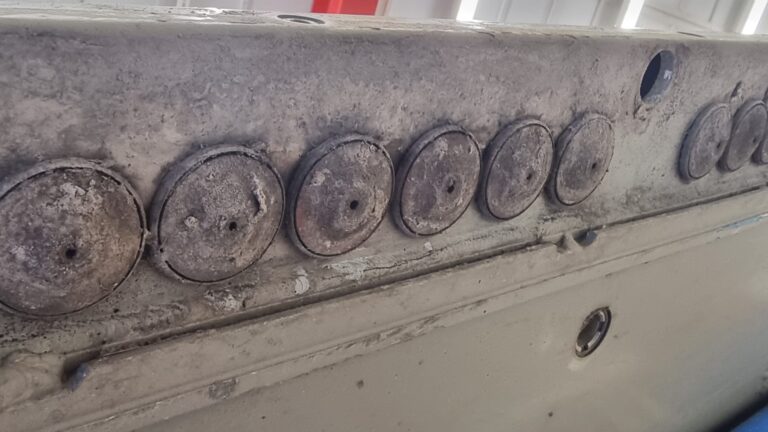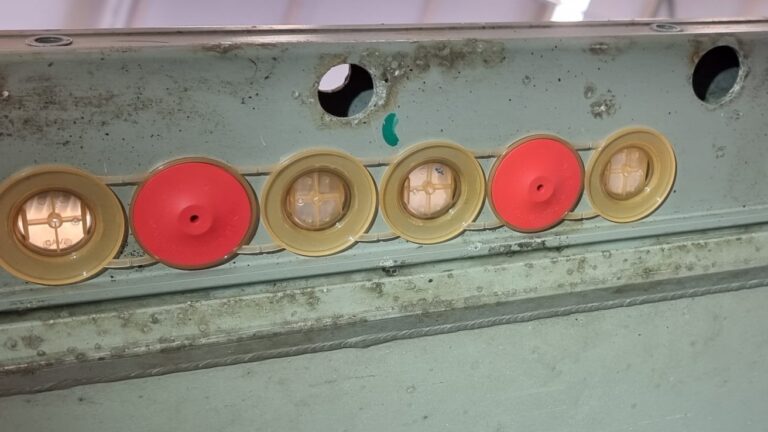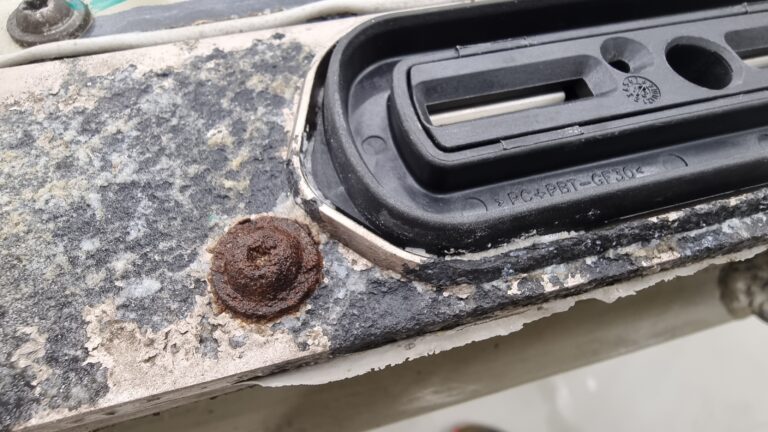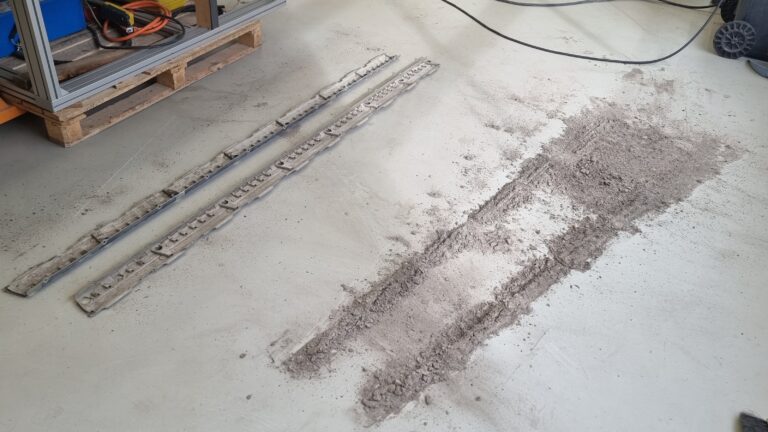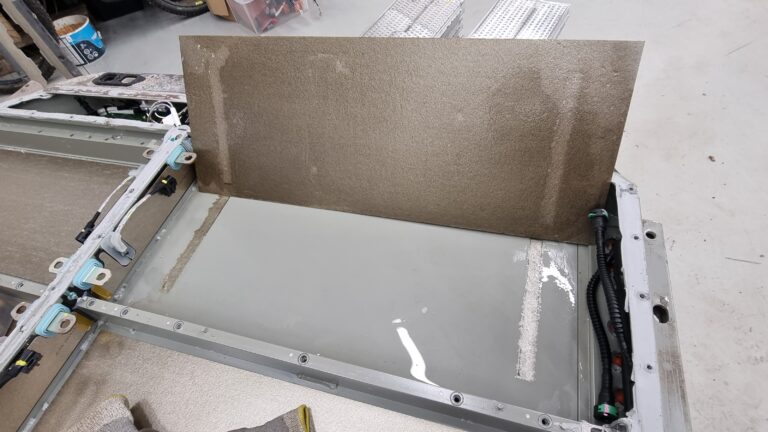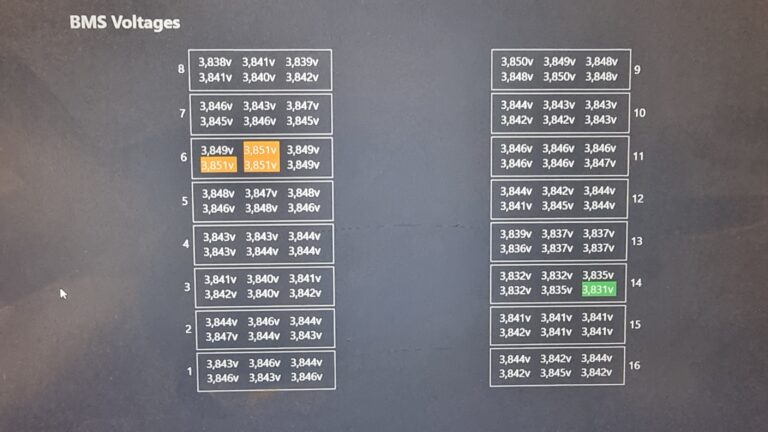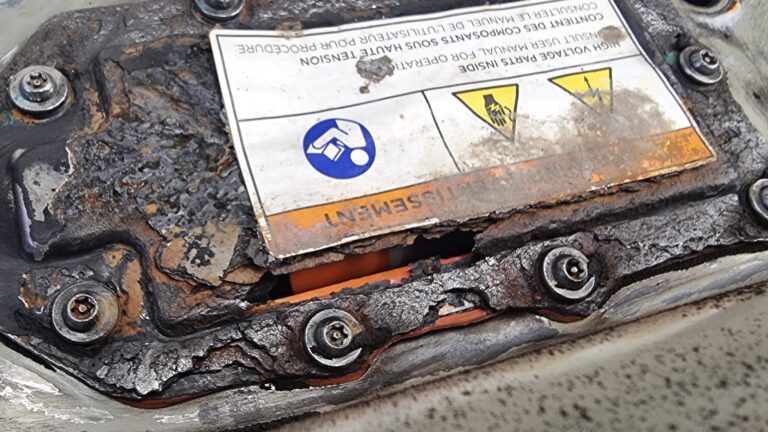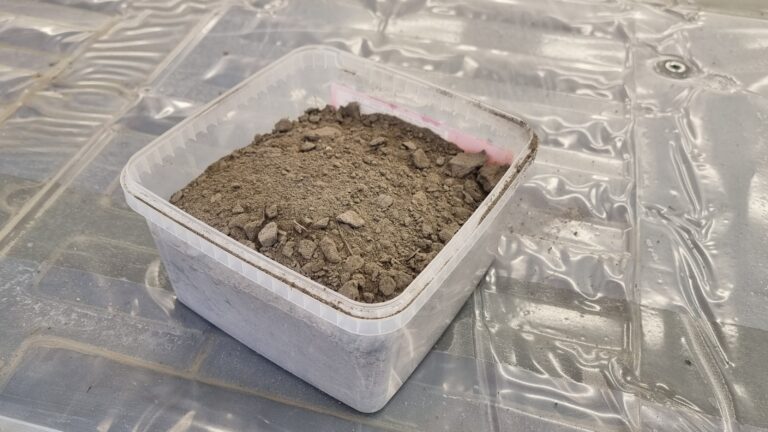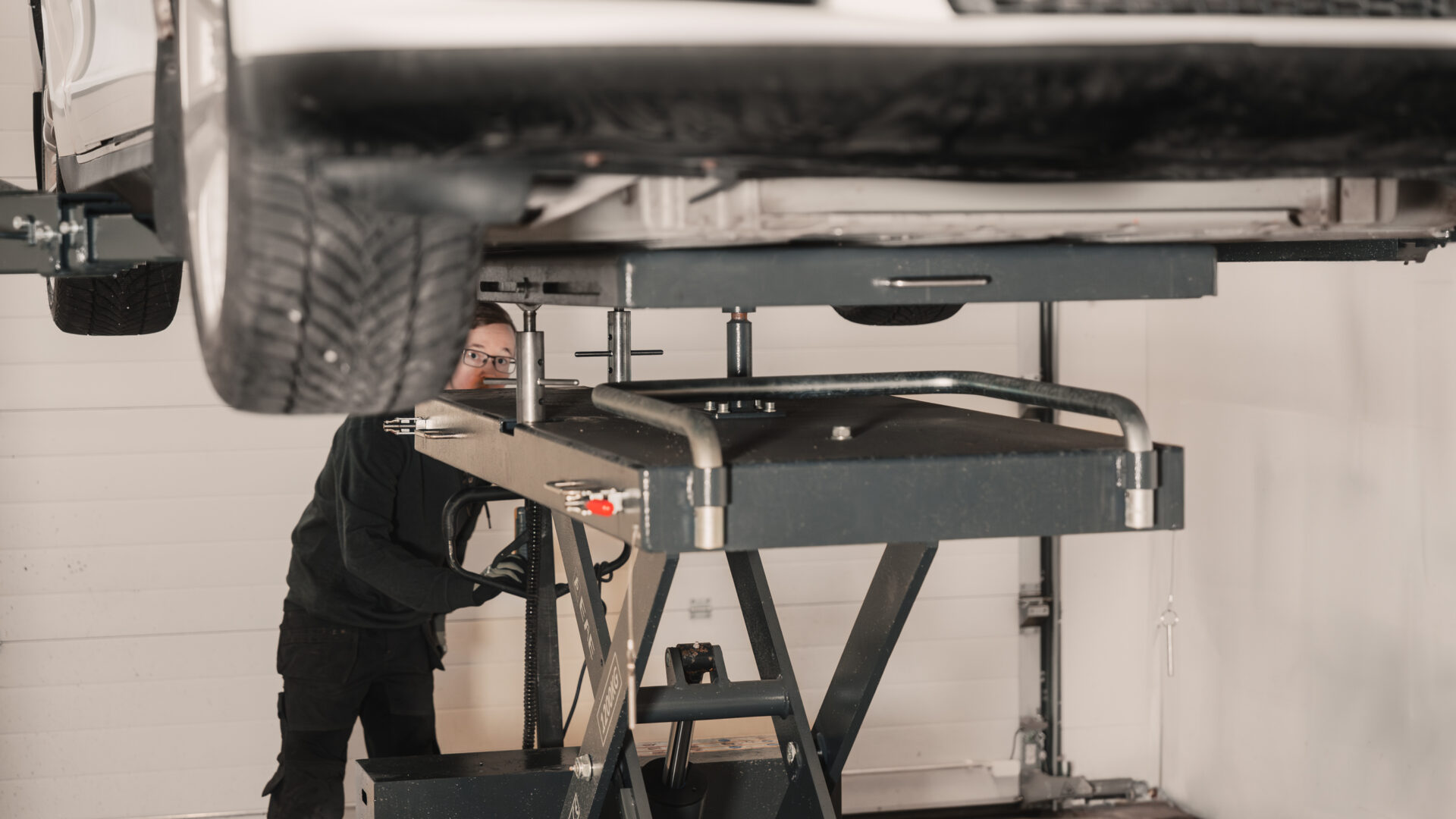A typical cause of battery failure is moisture accumulation in the battery. Moisture accumulates both through condensation and through valves in the battery skirts (so called skis). The valves become dirty in dusty conditions and start to let moisture into the battery – temperature fluctuations contribute to this. Sometimes moisture also enters through a rusted fuse cover or bolt holes through the battery cover. Moisture trapped inside the battery causes oxidation – for example, circuit boards inside the battery break down. We can repair or replace these circuit boards, but it requires laborious battery disassembly and more expensive battery repair.
In a preventive battery maintenance, we check the car’s diagnostics for fault codes and check the voltage of the battery cells. We then remove the battery from the car and check its condition externally without opening the battery. We remove the battery skirt covers, clean them and check the battery valves. We clean or, if necessary, replace the valves. If necessary, we also replace the main fuse cover and seal it and the critical battery cover grommets.
We remove moisture that may have already accumulated inside the battery without opening it.
Finally, we reinstall the battery and perform a short test drive.
During the service, we cannot check for incipient oxidation inside the battery, so the service certainly does not guarantee that the battery will not still have an internal fault, but it will at least slow down the onset of the fault. If an internal fault occurs in a battery that has just been serviced, we will repair the battery at a reduced price.
In the case of so called LDU (large rear drive unit), we also check the engine encoder, i.e. the sensor at the end of the engine. These engines have experienced internal coolant leakage and a wet sensor is a sign of an incipient problem. If the sensor is wet or the engine shows other signs of leakage, we recommend servicing the drive unit as soon as possible.
